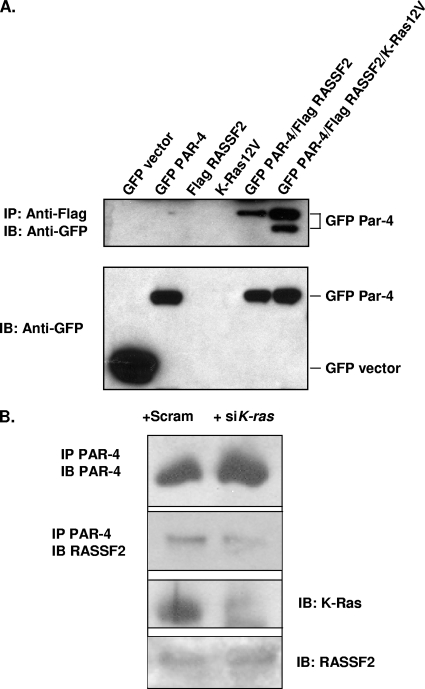FIG. 2.
Activated K-Ras enhances the interaction between RASSF2 and PAR-4. (A) 293T cells were transfected with Flag-RASSF2 and GFP-PAR-4 or GFP-vector in the presence or absence of activated K-Ras, and lysates were prepared and immunoprecipitated with anti-Flag, fractionated on SDS gels, and immunoblotted (IB) with anti-GFP (top panel). Activated K-Ras enhanced the association between RASSF2 and PAR-4 (compare lanes 5 and 6). Aliquots of the input lysates were similarly blotted with anti-GFP to ensure equivalent GFP-PAR-4 expression levels (bottom panel). The lower band in lane 6, top panel, was consistently observed and may correspond to a cleaved form of PAR-4. (B) H441 cells were transfected with K-ras siRNA or scrambled control. The cells were then lysed and immunoprecipitated with anti-PAR-4 antibodies. The immunoprecipitate was then Western blotted for endogenous RASSF2. The top panel shows that the siRNA did not inhibit the expression of PAR-4. The second panel shows that the levels of RASSF2 coprecipitating with PAR-4 were reduced in the siRNA K-Ras-treated cells. The third panel shows that K-Ras protein was downregulated in the siRNA treated cells. The fourth panel shows that the total levels of RASSF2 in the pre-IP lysates were the same.

